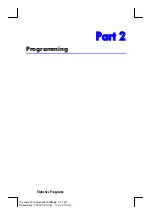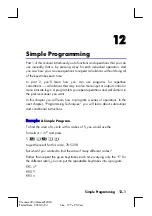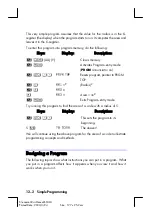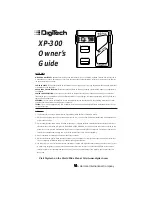
Simple
Programming
12–13
File name 32sii-Manual-E-0424
Printed Date : 2003/4/24 Size : 17.7 x 25.2 cm
Thus the program should not assume that the X–, Y–, and Z–registers'
contents will be the same before and after the INPUT instruction. If you
collect, all the data in the beginning and then recall then when needed for
calculation, then this prevents the stack's contents from being altered just,
before a calculation.
For example, see the
"
Coordinate Transformations" program in chapter 15.
Routine
D
collects all the necessary input for the variables
M, N,
and
T
(lines
D02 through D04) that define the
x
and
y
coordinates and angle
θ
of a new
system.
To respond to a prompt:
Mien you run the program, it will stop at each INPUT and prompt you for that
variable, such as
@)
. The value displayed (and the contents of the
X–register) will be the current contents of R.
To leave the number unchanged,
just press
f
.
To change the number,
type the new number and press
f
, This
new number writes over the old value in the X–register. You can enter a
number as a fraction if you want. If you need to calculate a number, use
normal keyboard calculations, then press
f
. For example, you can
press 2
5
0
f
.
To calculate with the displayed number,
press
before
typing another number.
To cancel the INPUT prompt,
press
. The current value for the
variable remains in the X–register. If you press
f
to resume the
program, the canceled INPUT prompt is repeated. If you press
during digit entry, it clears the number to zero. Press
again to cancel
the INPUT prompt.
To display digits hidden by the prompt,
press
{
. (If
it is a binary number with more than 12 digits, use the and
<
and
6
keys to see the rest.)










































